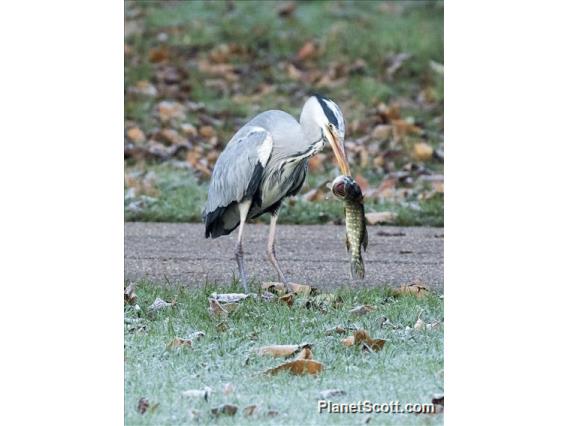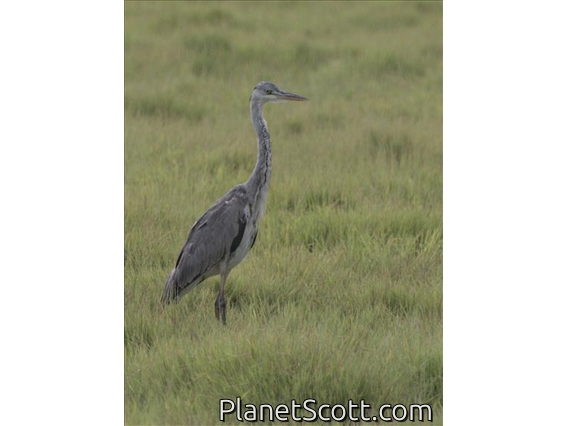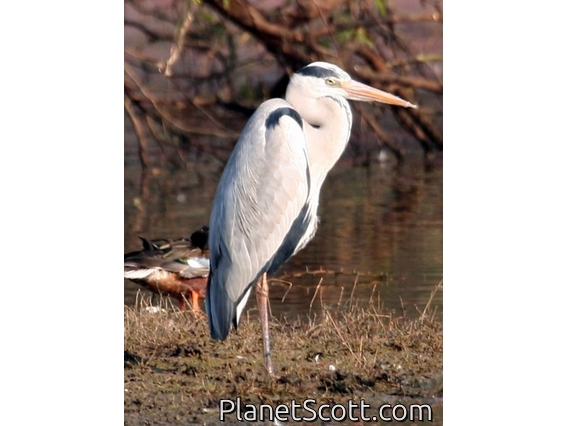Gray Heron (Ardea cinerea)

Gray Heron (Ardea cinerea)

Gray Heron (Ardea cinerea)

Gray Heron (Ardea cinerea)

Gray Heron (Ardea cinerea) - Immature

Grey Heron (Ardea cinerea)





×






Gray Heron (Ardea cinerea)

Gray Heron (Ardea cinerea)

Gray Heron (Ardea cinerea)

Gray Heron (Ardea cinerea) - Immature

Grey Heron (Ardea cinerea)
About Gray Heron (Ardea cinerea)
- Kingdom: Animals
- Phylum: Chordates
- Class: Birds
- Order: Pelicans
- Family: Herons
The grey heron is a long-legged wading bird of the heron family, Ardeidae, native throughout temperate Europe and Asia, and also parts of Africa. It is resident in much of its range, but some populations from the more northern parts migrate southwards in autumn. A bird of wetland areas, it can be seen around lakes, rivers, ponds, marshes and on the sea coast. It feeds mostly on aquatic creatures which it catches after standing stationary beside or in the water, or stalking its prey through the shallows.
Source: Wikipedia
Trips
Visits
-
2001-06-01
London, England -
2002-12-29
Cape Point, South Africa -
2006-01-03
Bikaner - Gajner Palace, India -
2006-01-09
Kheoladeo National Park, India -
2006-03-23
Sultan's Marsh Bird Paradise, Turkey -
2008-07-19
Irkutsk - Freeway Swamps, Russia -
2009-07-15
Hong Kong Wetland Park, Hong Kong -
2009-07-22
Wukang Sinopec Station, China -
2011-01-04
Lake Langano - Bishangari Forest, Ethiopia -
2011-01-13
Bale Mountains National Park, Ethiopia -
2011-01-23
Bahir Dar, Ethiopia -
2011-01-28
Sinai Peninsula, Egypt -
2013-01-08
-
2013-02-01
Ang Trapeang Thmor, Cambodia -
2013-02-02
Pak Thale, Thailand -
-
2013-02-19
Periyar Wildlife Sanctuary, India -
2013-10-24
Nairobi National Park, Kenya -
2013-10-25
Lake Nakuru National Park, Kenya -
2013-10-31
Saiwa Swamp National Park, Kenya -
2013-11-02
Central Island National Park, Kenya -
-
-
-
-
-
-
-
-
-
-
-
-
-
2017-01-14
Entebbe, Uganda -
-
-
-
-
-
-
-
-
-
-
-
-
-
-
-
-
-
-
-
-
-
-
-
-
-
-
-
-
-
-
-
-
-
-
-
-
-
-
-
-
-
-
-
-
-
-








